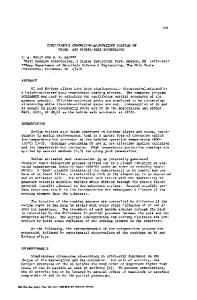Nickel coating performance of porous SiC structures by electroless coating
- PDF / 3,312,083 Bytes
- 8 Pages / 595.276 x 790.866 pts Page_size
- 76 Downloads / 340 Views
ICCESEN 2017
Nickel coating performance of porous SiC structures by electroless coating Ugur Soy 1 Received: 30 March 2020 / Accepted: 18 May 2020 # Saudi Society for Geosciences 2020
Abstract In this study, the effect of nickel coating and performance of porous silicon carbide structures, by an electroless coating method, was investigated. Silicon carbide powders of 30 μm and bind bentonite powders of 20 μm were mixed, and a slurry was obtained. This mixture was then absorbed into the polymeric sponge template. The structures were kept in the furnace until 1300 °C; then both water and polyurethane were removed from the structure, and the remaining particles were sintered to each other. In order to improve the wetting behavior of the aluminum composite, the porous silicon carbide structures obtained were coated with the electroless coating method. AlSi10Mg aluminum casting alloy was infiltrated into the nickel-coated porous structures by a pressure die casting method. In order to examine the coating performance, microstructure, and element analysis, both porous silicon carbide structures and aluminum composites were performed. Density, according to the Archimedes principle, and porosity measurements were made on all aluminum composites. As a result, the positive effect of nickel coating on wetting in aluminum matrix composite systems was confirmed by obtaining a value close to theoretical density with 99.75%. Keywords Electroless nickel coating . Ceramic . Silicon carbide . Composite
Introduction In the last few years, studies on the electroless nickel coating of reinforcement material have accelerated in eliminating the matrix-reinforcing interface problems seen in metal matrix composites (He et al. 2014; Grosjean et al. 2001; Khosroshahi et al. 2014; Kretz et al. 2004; Li and An 2008). Metal matrix composites are manufactured for metal and alloys using ceramic particles, fiber, or porous forms. Regardless of the form in which the reinforcement phase is included, the possibility of an interface problem between metal and ceramic in composite manufacturing emerged (León and Drew 2002). Therefore, in aluminum composite materials, exclusively, ceramic reinforcement phases are covered with metal to eliminate this problem that occurs at the interface of the alloy and ceramic reinforcement (Rohatgi et al. This article is part of the Topical Collection on Geo-Resources-EarthEnvironmental Sciences * Ugur Soy [email protected] 1
Department of Metallurgical and Materials Science Engineering, Faculty of Technology, Sakarya University of Applied Sciences, Sakarya, Turkey
1986; Erich 1986). Thus, metal-ceramic contact is prevented, and the desired bond performance can be achieved by allowing metal-metal contact (Leon and Drew 2000). Coating technology has increased in recent years due to the functional properties of the materials. One of the most effective methods of increasing the wettability of the reinforcing phase and preventing interfacial reactions between the reinforcing phase and the matrix alloy in the productio
Data Loading...











